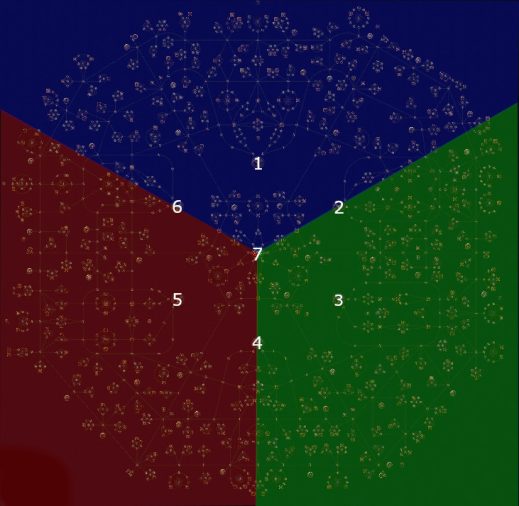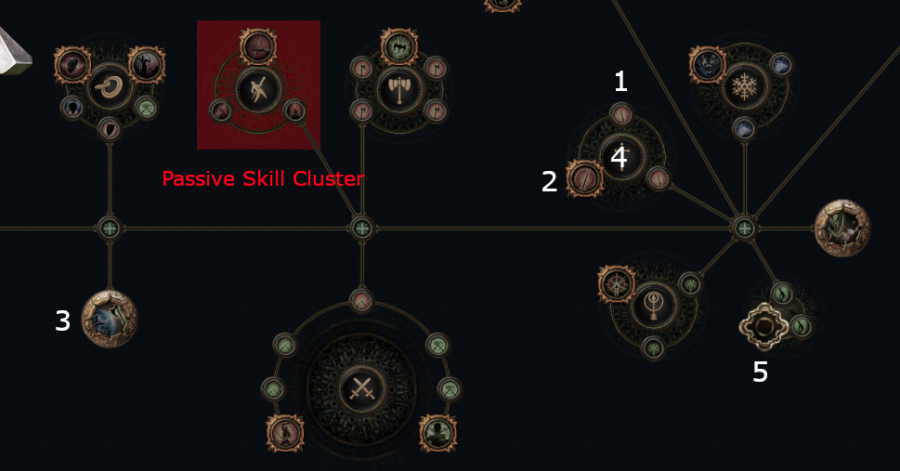In Path of Exile (PoE), the Passive Skill Tree serves as a complex and vital system that shapes your character’s development and overall gameplay experience. With over 1,300 nodes, it offers a plethora of choices that can significantly influence your character’s effectiveness. Here’s a structured guide on how to effectively plan your build using the Passive Skill Tree.
Understanding the Passive Skill Tree
1. Character Classes and Attributes: Each of the game’s character classes—Scion, Duelist, Marauder, Ranger, Witch, and Templar—starts at a specific location on the tree based on their core attributes: Strength (red), Dexterity (green), and Intelligence (blue). The starting point affects your character’s primary focus, i.e., melee combat, ranged attacks, or spellcasting.
2. Types of Nodes:
– Basic Nodes: These provide small increments to stats such as increased health, damage, or elemental resistances.
– Notable Nodes: Represented by larger icons, these offer more substantial bonuses and can significantly enhance specific aspects of your build.
– Keystone Passives: These unique nodes fundamentally alter gameplay mechanics. While they offer powerful advantages, they often come with trade-offs, so careful consideration is crucial.
Effective Build Planning Steps
1. Define Your Playstyle: Begin by selecting a primary skill or playstyle that resonates with you, whether it be melee, ranged, or spellcasting. This central decision will inform which nodes you should prioritize on the tree.
2. Select Key Passives: Identify and choose key passive nodes and Keystones that amplify your character’s core strengths. Focus on aspects such as damage type, attack speed, or defensive mechanics that align with your chosen playstyle.
3. Balance Offense and Defense: It’s essential to strike a balance between offensive capabilities and survivability. Allocate points to both damage-enhancing nodes and defensive clusters to ensure your character can withstand encounters with tougher enemies.
4. Utilize Build Guides: If you’re new to PoE or finding the Passive Skill Tree overwhelming, consider starting with established build guides. These can provide insights and synergies that might not be apparent at first glance and can guide your initial decisions.
5. Path Efficiency: Plan your route through the tree to minimize detours. This approach allows for quicker leveling and strengthens your build’s overall effectiveness—a straight path is often more efficient than meandering.
6. Use Refund Points: As you progress and gain understanding of your build, utilize any refund points or Orbs of Regret you earn to correct missteps or optimize your skill allocation. This iterative process allows for flexibility and growth in your build.
7. Explore Jewels and Ascendancies: Although not covered here extensively, keep in mind that Jewels and Ascendancy classes can further refine and enhance your build. They provide additional layers of customization within the Passive Skill Tree framework.
Tools and Additional Tips
– Skill Tree Planner: Take advantage of the official Path of Exile Passive Skill Tree planner available on their website. This tool is invaluable for experimenting with different builds and sharing them with the community.
– Iterative Planning: Treat the build planning process as iterative. Be open to experimenting with different nodes and adjusting as you learn more about the game mechanics.
– Starting Points: New players should focus on their class’s starting attribute area initially. This approach helps in understanding the synergy between passives and allows for a more manageable build experience.
Conclusion
The Passive Skill Tree in Path of Exile is a vast and flexible system that requires strategic thinking tailored to your character’s chosen skills. Balancing offense and defense through a web of interconnected nodes is crucial for success. By following structured planning steps, using available tools, and being willing to iterate on your build, you can navigate this complex system effectively, transforming an intimidating experience into a rewarding journey in the world of Wraeclast.






Leave a Reply